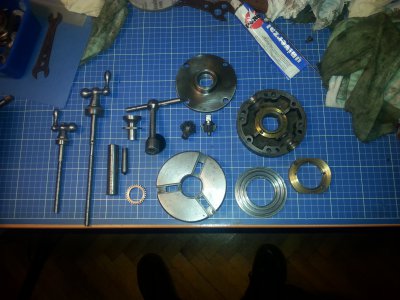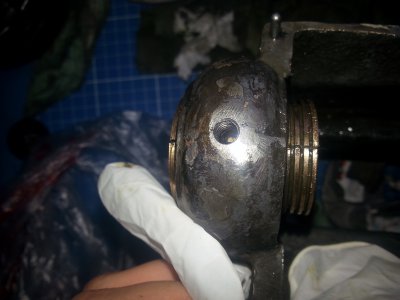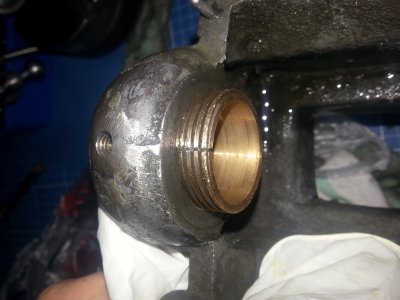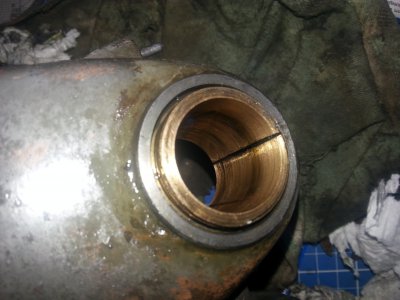- Joined
- May 28, 2014
- Messages
- 20
I got a lathe of unknown brand for some shelves I did in a shed of my friends' parents. His grandfather died 15 years ago, and who knows when was the last time he used it.
The lathe is most similar to Atlas 618, but its most probably of Yugoslavian, German or Russian make. Unlike Atlas, you have to engage the bull gear with the spindle to make it work, and disengage to use the backgears (I think).
To say the lathe was in bad condition would be charming understatement.
Rust all around, seized motor, banged up, old grease with embedded metal shavings, concrete splatters ?!, V belt was in tatters, etc. The parts that were lubricated properly, worked properly (spindle, crosslide, tailstock).
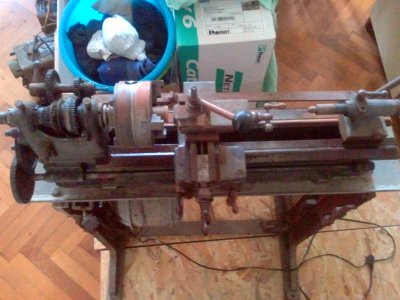
You are invited to travel with this newbie as I embark on a quest to make this lathe usable and learn new and exciting stuff.
I have to say I've never done anything like this, but I was willing and eager to give it a try.
That being said, I will have a few questions along the way, and I hope you experienced people will be able to help me.
P.S.
Don't mind the bucket-o'-socks, as I don't have a proper workshop (or any kind of workshop for that matter), I'm doing the most of the cleaning in my bedroom (yikes, I know). The parts that i have to clean with gasoline, I clean on my balcony.
Also, some of the steps are missing, as I found this forum after I already disassembled most of it.
------------------------
First I removed everything i could without tools and armed with an old bed sheet and a can of WD-40 i started removing the grease from the parts that I could reach.
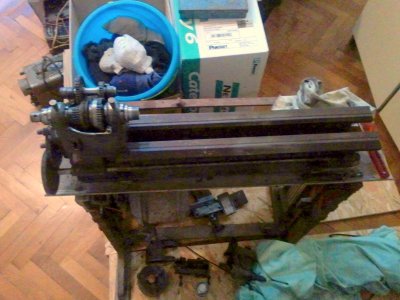
You can see a difference right away
The motor was in really poor condition, with seized bearings. I gave it to a friend who's father managed to make it work.
This is a picture i took for the sake of wiring, but you can see the state the motor is in.
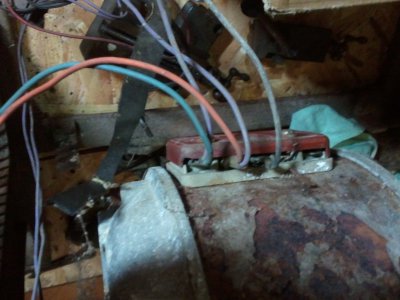
When trying to remove the head-stock I came to an unforeseen problem, not a single tube key I have, had thin enough walls to enter the mounting holes.
So another friend's father turned his socket wrench on his lathe to a proper diameter.
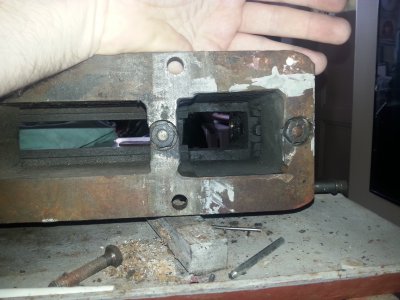
The polishing and removing rust usually takes place when i get back from work, around midnight. Much elbow grease goes into this and this are the first result
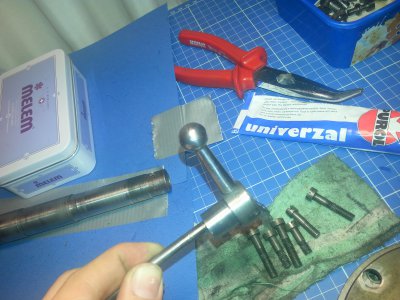
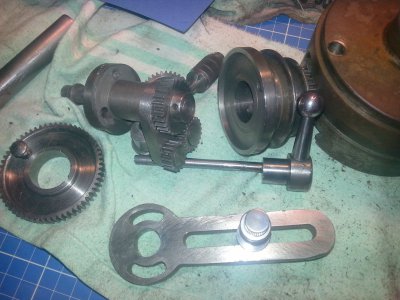
Hammerite had these colors available, so I decided I will paint the machine green with hammered effect. Hopefully it will turn out right
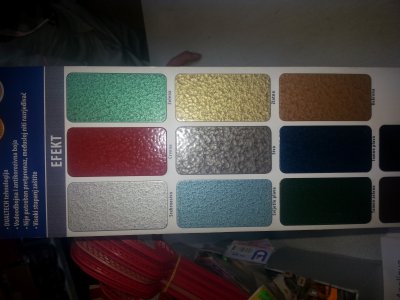
This is it for now, I'll keep you posted as I progress further.







The lathe is most similar to Atlas 618, but its most probably of Yugoslavian, German or Russian make. Unlike Atlas, you have to engage the bull gear with the spindle to make it work, and disengage to use the backgears (I think).
To say the lathe was in bad condition would be charming understatement.
Rust all around, seized motor, banged up, old grease with embedded metal shavings, concrete splatters ?!, V belt was in tatters, etc. The parts that were lubricated properly, worked properly (spindle, crosslide, tailstock).

You are invited to travel with this newbie as I embark on a quest to make this lathe usable and learn new and exciting stuff.
I have to say I've never done anything like this, but I was willing and eager to give it a try.
That being said, I will have a few questions along the way, and I hope you experienced people will be able to help me.
P.S.
Don't mind the bucket-o'-socks, as I don't have a proper workshop (or any kind of workshop for that matter), I'm doing the most of the cleaning in my bedroom (yikes, I know). The parts that i have to clean with gasoline, I clean on my balcony.
Also, some of the steps are missing, as I found this forum after I already disassembled most of it.
------------------------
First I removed everything i could without tools and armed with an old bed sheet and a can of WD-40 i started removing the grease from the parts that I could reach.

You can see a difference right away
The motor was in really poor condition, with seized bearings. I gave it to a friend who's father managed to make it work.
This is a picture i took for the sake of wiring, but you can see the state the motor is in.

When trying to remove the head-stock I came to an unforeseen problem, not a single tube key I have, had thin enough walls to enter the mounting holes.
So another friend's father turned his socket wrench on his lathe to a proper diameter.

The polishing and removing rust usually takes place when i get back from work, around midnight. Much elbow grease goes into this and this are the first result


Hammerite had these colors available, so I decided I will paint the machine green with hammered effect. Hopefully it will turn out right

This is it for now, I'll keep you posted as I progress further.








